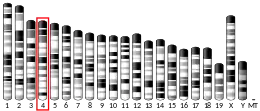| RSPO1 | |||||||||||||||||||||||||||||||||||||||||||||||||||
|---|---|---|---|---|---|---|---|---|---|---|---|---|---|---|---|---|---|---|---|---|---|---|---|---|---|---|---|---|---|---|---|---|---|---|---|---|---|---|---|---|---|---|---|---|---|---|---|---|---|---|---|
| |||||||||||||||||||||||||||||||||||||||||||||||||||
| Identifiers | |||||||||||||||||||||||||||||||||||||||||||||||||||
| Aliases | RSPO1, CRISTIN3, RSPO, R-spondin 1 | ||||||||||||||||||||||||||||||||||||||||||||||||||
| External IDs | OMIM: 609595 MGI: 2183426 HomoloGene: 52148 GeneCards: RSPO1 | ||||||||||||||||||||||||||||||||||||||||||||||||||
| |||||||||||||||||||||||||||||||||||||||||||||||||||
| |||||||||||||||||||||||||||||||||||||||||||||||||||
| |||||||||||||||||||||||||||||||||||||||||||||||||||
| |||||||||||||||||||||||||||||||||||||||||||||||||||
| |||||||||||||||||||||||||||||||||||||||||||||||||||
| Wikidata | |||||||||||||||||||||||||||||||||||||||||||||||||||
| |||||||||||||||||||||||||||||||||||||||||||||||||||
R-spondin-1 is a secreted protein that in humans is encoded by the RSPO1 gene, found on chromosome 1.[5] In humans, it interacts with WNT4 in the process of female sex development. Loss of function can cause female to male sex reversal.[6] Furthermore, it promotes canonical WNT/β catenin signaling.[7]
Structure
The protein has two cysteine-rich, furin-like domains and one thrombospondin type 1 domain.[5]
Function
Sex Development
Early Gonads
RSPO1 is required for the early development of gonads, regardless of sex. It has been found in mice only eleven days after fertilization.[6] To induce cell proliferation, it acts synergistically with WNT4.[6] They help stabilize β-catenin, which activates downstream targets. If both are deficient in XY mice, there is less expression of SRY and a reduction in the amount of SOX9. Moreover, defects in vascularization are found. These occurrences result in testicular hypoplasia. Male to female sex reversal, however, does not occur because Leydig cells remain normal. They are maintained by steroidogenic cells, now unrepressed.[6]
Ovaries
RSPO1 is necessary in female sex development. It augments the WNT/β catenin pathway to oppose male sex development. In critical gonadal stages, between six and nine weeks after fertilization, the ovaries upregulate it while the testes downregulate it.[8]
Mucositis
Oral mucosa has been identified as a target tissue for RSPO1. When administered to normal mice, it causes nuclear translocation of β-catenin to this region.[7] Modulation of the WNT/β catenin pathway occurs through the relief of Dkk1 inhibition. This occurrence results in increased basal cellularity, thickened mucosa, and elevated epithelial cell proliferation in the tongue. RSPO1 can therefore potentially aid in the treatment of mucositis, which is characterized by inflammation of the oral cavity. This unfortunate condition often accompanies chemotherapy and radiation in cancer patients with head and neck tumors.[7] RSPO1 has also been shown to promote gastrointestinal epithelial cell proliferation in mice.[5]
References
- 1 2 3 GRCh38: Ensembl release 89: ENSG00000169218 - Ensembl, May 2017
- 1 2 3 GRCm38: Ensembl release 89: ENSMUSG00000028871 - Ensembl, May 2017
- ↑ "Human PubMed Reference:". National Center for Biotechnology Information, U.S. National Library of Medicine.
- ↑ "Mouse PubMed Reference:". National Center for Biotechnology Information, U.S. National Library of Medicine.
- 1 2 3 "Entrez Gene: RSPO1 R-spondin homolog (Xenopus laevis)".
- 1 2 3 4 Chassot, A. -A.; Bradford, S. T.; Auguste, A.; Gregoire, E. P.; Pailhoux, E.; De Rooij, D. G.; Schedl, A.; Chaboissier, M. -C. (2012). "WNT4 and RSPO1 together are required for cell proliferation in the early mouse gonad". Development. 139 (23): 4461–4472. doi:10.1242/dev.078972. PMID 23095882.
- 1 2 3 Zhao, J.; Kim, K. -A.; De Vera, J.; Palencia, S.; Wagle, M.; Abo, A. (2009). "R-Spondin1 protects mice from chemotherapy or radiation-induced oral mucositis through the canonical Wnt/ -catenin pathway". Proceedings of the National Academy of Sciences. 106 (7): 2331–2336. doi:10.1073/pnas.0805159106. PMC 2650156. PMID 19179402.
- ↑ Tomaselli, S.; Megiorni, F.; Lin, L.; Mazzilli, M. C.; Gerrelli, D.; Majore, S.; Grammatico, P.; Achermann, J. C. (2011). Lee, Sean (ed.). "Human RSPO1/R-spondin1 is Expressed during Early Ovary Development and Augments β-Catenin Signaling". PLOS ONE. 6 (1): e16366. Bibcode:2011PLoSO...616366T. doi:10.1371/journal.pone.0016366. PMC 3030573. PMID 21297984.
Further reading
- Strausberg RL, Feingold EA, Grouse LH, et al. (2003). "Generation and initial analysis of more than 15,000 full-length human and mouse cDNA sequences". Proc. Natl. Acad. Sci. U.S.A. 99 (26): 16899–903. Bibcode:2002PNAS...9916899M. doi:10.1073/pnas.242603899. PMC 139241. PMID 12477932.
- Ota T, Suzuki Y, Nishikawa T, et al. (2004). "Complete sequencing and characterization of 21,243 full-length human cDNAs". Nat. Genet. 36 (1): 40–5. doi:10.1038/ng1285. PMID 14702039.
- Kamata T, Katsube K, Michikawa M, et al. (2004). "R-spondin, a novel gene with thrombospondin type 1 domain, was expressed in the dorsal neural tube and affected in Wnts mutants". Biochim. Biophys. Acta. 1676 (1): 51–62. doi:10.1016/j.bbaexp.2003.10.009. PMID 14732490.
- Gerhard DS, Wagner L, Feingold EA, et al. (2004). "The status, quality, and expansion of the NIH full-length cDNA project: the Mammalian Gene Collection (MGC)". Genome Res. 14 (10B): 2121–7. doi:10.1101/gr.2596504. PMC 528928. PMID 15489334.
- Kim KA, Kakitani M, Zhao J, et al. (2005). "Mitogenic influence of human R-spondin1 on the intestinal epithelium". Science. 309 (5738): 1256–9. Bibcode:2005Sci...309.1256K. doi:10.1126/science.1112521. PMID 16109882. S2CID 45221785.
- Abraham C, Cho JH (2005). "Inducing intestinal growth". N. Engl. J. Med. 353 (21): 2297–9. doi:10.1056/NEJMcibr053367. PMID 16306530.
- Kimura K, Wakamatsu A, Suzuki Y, et al. (2006). "Diversification of transcriptional modulation: large-scale identification and characterization of putative alternative promoters of human genes". Genome Res. 16 (1): 55–65. doi:10.1101/gr.4039406. PMC 1356129. PMID 16344560.
- Gregory SG, Barlow KF, McLay KE, et al. (2006). "The DNA sequence and biological annotation of human chromosome 1". Nature. 441 (7091): 315–21. Bibcode:2006Natur.441..315G. doi:10.1038/nature04727. PMID 16710414.
- Parma P, Radi O, Vidal V, et al. (2007). "R-spondin1 is essential in sex determination, skin differentiation and malignancy". Nat. Genet. 38 (11): 1304–9. doi:10.1038/ng1907. PMID 17041600. S2CID 9687808.
- Binnerts ME, Kim KA, Bright JM, et al. (2007). "R-Spondin1 regulates Wnt signaling by inhibiting internalization of LRP6". Proc. Natl. Acad. Sci. U.S.A. 104 (37): 14700–5. Bibcode:2007PNAS..10414700B. doi:10.1073/pnas.0702305104. PMC 1965484. PMID 17804805.



